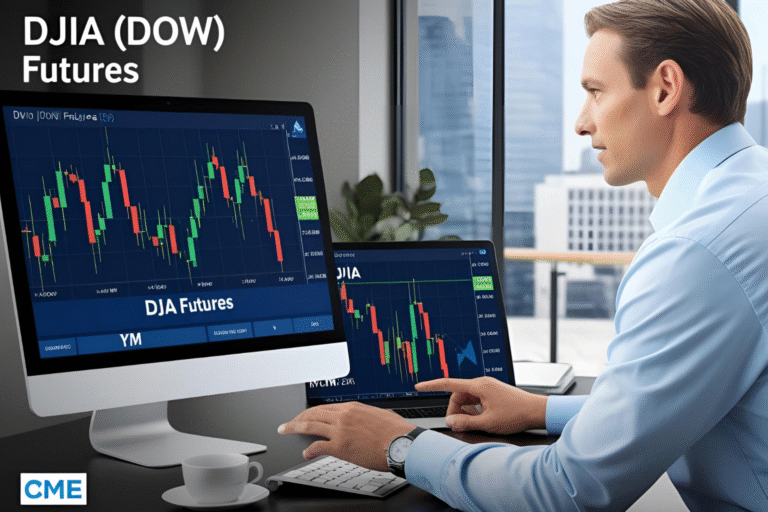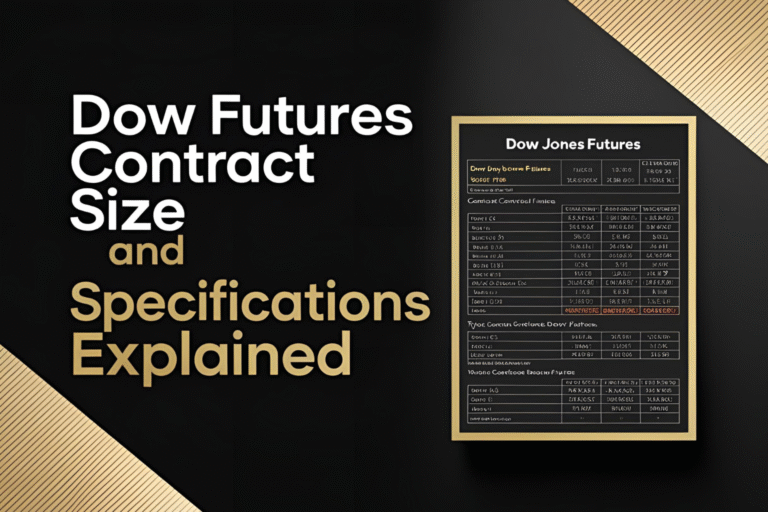Gold Futures Explained: How Gold Futures Work for Traders
Introduction
Gold is one of the oldest and most valuable assets in global markets. But did you know you don’t have to own physical gold to trade it? Many traders use gold futures to speculate on the price of gold without ever touching the metal. In this beginner-friendly guide, we’ll explain what gold futures are, how they work, and why they matter to traders and investors alike.
What Are Gold Futures?
Gold futures are standardized contracts to buy or sell a specific amount of gold at a future date and predetermined price. These contracts are traded on futures exchanges such as the COMEX, a division of the CME Group.
Each gold futures contract typically represents:
- 100 troy ounces of gold
- Settled in cash or physical delivery (though most traders opt for cash settlement)
- Traded nearly 24 hours a day during the trading week
Why Trade Gold Futures?
Gold futures allow you to:
- Speculate on price direction (long or short)
- Hedge against inflation or currency risks
- Gain exposure to gold without owning physical bullion
- Use leverage to control a large value with a smaller margin
Because of these benefits, gold futures are popular among both professional traders and retail investors.
How Gold Futures Work
Here’s how a typical trade works:
- A trader expects gold to rise from $2,000 to $2,050 per ounce.
- They buy a gold futures contract at $2,000.
- If the price rises to $2,050, the contract increases in value by $50 × 100 ounces = $5,000 profit.
- If the price falls, the trader faces a loss instead.
These contracts are marked to market daily, meaning profits and losses are settled every trading day.
Gold Futures Contract Specifications
| Parameter | Details |
|---|---|
| Exchange | COMEX (CME Group) |
| Contract Size | 100 troy ounces |
| Ticker Symbol | GC |
| Trading Hours | Nearly 24/5 |
| Settlement | Physical or Cash |
| Minimum Tick | $0.10 per ounce ($10 per contract) |
Where to Trade Gold Futures
You can trade gold futures on platforms like:
- CME Group (official exchange)
- Interactive Brokers
- TD Ameritrade (ThinkorSwim)
- NinjaTrader
These brokers offer tools for futures analysis, margin management, and risk control.
Gold Futures vs Gold ETFs
While both give you gold exposure, there are differences:
| Feature | Gold Futures | Gold ETFs (e.g. GLD) |
|---|---|---|
| Leverage | Yes | No |
| Expiration Date | Yes | No |
| Daily Settlement | Yes (mark-to-market) | No |
| Ownership | Contract-based | Indirect gold holdings |
Futures are better for short-term trading, while ETFs are suitable for long-term investing.
Risks of Trading Gold Futures
- High volatility: Price swings can be large.
- Leverage risk: Small moves can result in large gains—or losses.
- Margin calls: You must maintain minimum account balances.
- Expiration deadlines: Futures expire on a set schedule.
Always use a stop-loss and trade with a strategy.
Conclusion
Gold futures are a powerful way to gain exposure to one of the world’s most valuable assets. Whether you’re hedging, speculating, or diversifying, understanding how gold futures work is essential for trading with confidence. Start small, learn the basics, and always manage your risk carefully.
FAQs
Q1. What is the minimum capital required to trade gold futures?
It depends on the broker and margin requirements, but it often ranges from $5,000 to $10,000.
Q2. Can I trade gold futures 24/7?
Gold futures trade nearly 24 hours a day from Sunday evening to Friday evening, with a break each weekday.
Q3. Do gold futures expire?
Yes, every futures contract has a specific expiration month. You can close your position or roll it over before expiry.
Q4. Is trading gold futures risky?
Yes, especially because of leverage. It’s important to use proper risk management tools like stop-loss orders.
Q5. What’s the difference between gold futures and physical gold?
Gold futures are financial contracts based on price, while physical gold is a tangible asset you can hold.




